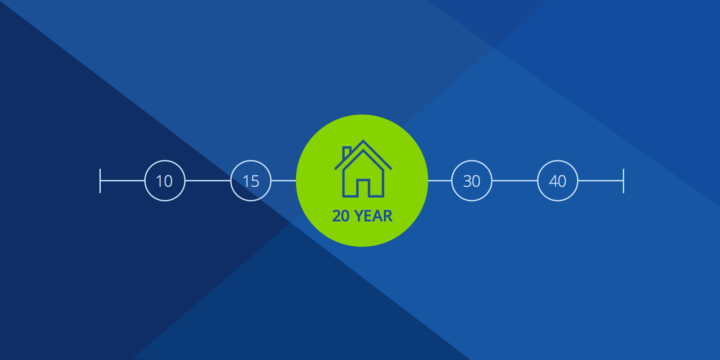HELOC, Home Equity, Or Cash-Out Refi?
If you need to tap into your home equity, which is the right choice for you? Let’s take a closer look so you can determine which one best meets your objectives.

Written by Francesca Faris on May 2, 2017
IN THIS ARTICLE:
If you need to tap into your home equity for home improvement, a large expense, a new investment, or just some extra cash, you have three main choices: a home equity line of credit (HELOC), a home equity loan, or a cash-out refinance. Let’s take a closer look at each of these mortgage products so you can determine which one best meets your objectives.
Home Equity Line of Credit (HELOC)
What it is:
Some HELOCs require you to pay only the interest due on the outstanding balance, which means you’re not paying the balance down, and some require a principal and interest payment, which means your payment will be higher, but you’re paying the balance down.
A HELOC is often a second mortgage behind your primary first mortgage, but it doesn’t have to be. If you had no first mortgage, you could put a HELOC in place as your only loan.
Most HELOCs qualify you buy using a payment that’s significantly higher than you’d actually be required to make. They do this because HELOC rates are adjustable, and lenders want to account for rates (and therefore payments) moving higher in the future.
Most HELOCs also have a “fixed-rate draw” or a “fixed-rate advance” option which allows you to draw a portion of the HELOC balance at a fixed rate. This will protect you from future rising rate risk, but rates for fixed-rate draw are usually higher than the HELOC rates at the time of the fixed-rate draw.
HELOC rates are determined by adding the Prime Rate to a base rate called a margin. The Prime Rate can move as the Fed adjusts rates each year. Your margin is based on your credit score and how much equity you have in your home.
Pros:
- HELOCs are good for accessing cash only when needed. Because you don’t pay on a HELOC until you have a balance, it can just sit there as a zero-balance, zero-payment loan until you need it.
- Comparing a HELOC vs. home equity loan, HELOCs have lower rates in a low-rate environment like we’ve had since 2008.
- Fixed-rate advance options enable you to fix a rate for a large one time expense like a home improvement project.
Cons:
- HELOC rates are adjustable. The Prime Rate noted above moves as the Fed adjusts rates, which is possible when the Fed meets eight times per year. In an improving economy, HELOC rates will rise because the Prime Rate will rise. Remember to discuss with your lender just how high your HELOC rates could rise.
- When you have a fully amortized payment, it can be amortized over 20 years, so your payment can be much higher. Ask your lender to brief you on payment options.
- If you want to refinance your first mortgage, the new first mortgage lender must get approval from the existing HELOC lender for the HELOC to go into second lien position behind the new first mortgage. This can take often take longer than a rate lock period allows for a first mortgage, and also sometimes can be denied. Make sure your HELOC lender understands this timing before locking a new refinance.
Questions about HELOCs? Find a lender on Zillow who can help

Home Equity Loan
What it is:
Comparing home equity loan vs. HELOC rates, a home equity loan rate will typically be higher because it’s a fixed-rate loan, whereas a HELOC is adjustable.
Comparing a home equity loan vs. a cash out refinance, a home equity loan rate will typically be higher because it’s a second mortgage, whereas a cash out refinance is a first mortgage.
Home equity loans are typically fixed for 20 or 30 years, and they qualify you with their fully amortized payment.
Pros:
- Home equity loans are simpler to understand than HELOCs because they’re fixed-rate loans.
- Home equity loans are a common way to avoid mortgage insurance when buying a home. If your first mortgage is greater than 80 percent of the home’s value, lenders require mortgage insurance, which is an extra monthly fee. For example, if you were putting 10 percent down, you can cap your first mortgage at 80 percent, and get a home equity loan for 10 percent, thereby avoiding mortgage insurance.
Cons:
- Home equity loans require you to take all cash at one time. If you don’t need cash right away, you’d be paying a monthly payment — including the interest — on funds that wouldn’t be used.
- Home equity loan payments don’t decrease as you pay down the loan like some HELOC payments do. Because it’s a fully amortized loan, your payment is always the same. That payment will pay off more principal than interest as time goes on, but the payment amount never changes.
Cash Out Refinance
What it is:
Comparing a cash out refinance vs. HELOC, cash out refinance rates will be lower because it’s a first mortgage.
Comparing a cash out refinance vs. refinance, traditional refinance rates will be lower because there is a rate premium for taking cash out.
Cash out refinances can be fixed or adjustable rates. Fixed rates qualify using the payment. Adjustable rates will often qualify using a payment that’s higher than you’d actually be required to make because they need to account for the fact that rates will move higher in the future.
If you’ve had a HELOC or a home equity loan as a second mortgage in the past, you can combine that second mortgage with a new cash out refinance first mortgage to consolidate all your debt into one single loan. Ask your lender to present options to you, because it will depend on how much equity you have.
Pros:
- Comparing cash out refinance vs. HELOCs vs. home equity loans, a cash out refinance is the lowest rate method to get cash out of your home.
- You can use a cash out refinance to consolidate higher interest non-housing debt like credit cards into a lower interest home loan.
Cons:
- The interest on cash you take out beyond your initial loan amount at the time of purchase is not tax deductible. The IRS only allows “home acquisition debt” to be deductible, so cash you take out later isn’t deductible. This is a little-known fact about the IRS rules; read more about home acquisition debt rules for details.
- Comparing cash out refinance vs. refinance rates, cash out rates are higher. Also, you need to have more equity in your home for a cash out refinance than a traditional refinance. Your lender can advise you on what you qualify for.
Interested in a HELOC or refinancing? Find a local lender on Zillow who can help.
Tap into your home equity
Zillow makes it simple to explore your options for a Home Equity Line of Credit.
Zillow Group Marketplace, Inc. NMLS #1303160
Get startedRelated Articles
Get a mortgage with Zillow Home Loans
Go from dreaming to owning with low down payment options, competitive rates and no hidden fees. A dedicated loan officer will guide you until you have your keys in hand.

Zillow Home Loans, NMLS #10287. Equal Housing Lender.



